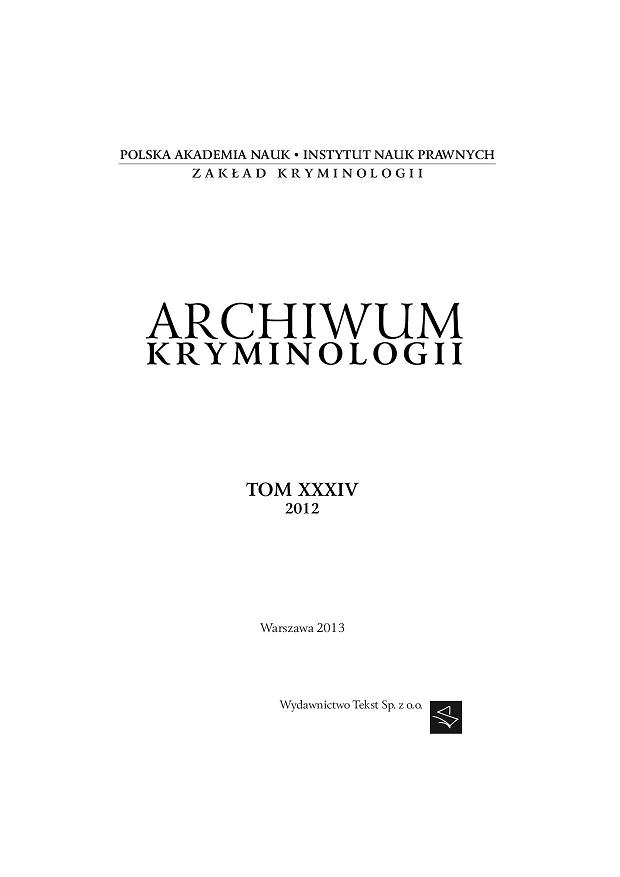Przestępczość na warszawskiej Pradze z perspektywy współczesnych teorii ekologicznych w kryminologii
Crime in the Warsaw Praga district from the enviromental criminology perspective
Author(s): Magdalena GoldschneiderSubject(s): Law, Constitution, Jurisprudence
Published by: Instytut Nauk Prawnych PAN
Keywords: CRIME; CRIMINOLOGY; ENVIROMENTAL CRIMINOLOGY PERSPECTIVE;
Summary/Abstract: The article presents research constituting an attempt at verification of theories historically originating from the Chicago School of Sociology and the ecological approach within criminology, the supporters of which focus on the criminal offence itself and on its environmental conditions. This group of theories belongs to the environmental criminology. Criminological deliberations on the crime, carried out in the spirit of the contemporary environmental trend, are based on the assumption that the occurrence of a criminal offence is determined by four necessary elements: the legal norm that is breached, the offender, the object of the crime (victim or target) as well as the time and space in which the crime is committed. The object of interest of the environmental criminology is in the first place the space and time dimension of the act, in which the remaining elements meet. The discussed research was based on the rou-tine activity theory, the rational choice perspective and the crime pattern theory. The basic theoretical assumption is that the volume of crime is influenced by the number of crime opportunities. According to the routine activity theory, a crime opportunity occurs at the moment of convergence of a likely offender and a suitable target in the absence of a capable guardian. The first hypothesis assumes that the crime opportunity is a necessary condition for occurrence of a criminal offence, including that related to violence. The second hypothesis was based on the assumption that crime opportunities are not evenly distributed in time and space. We should therefore assume that not every object (person or thing) is a suitable target in the event of a concrete criminal act. Not every environment constitutes scenery conducive to commitment of a given crime. In other words, there are areas with higher concentration of crime. The third hypothesis was related to an assumption of the crime patterns concept relating to the offenders’ daily life patterns. It says that perpetrators search for suitable targets in areas that are well-known to them – in the vicinity of their workplace, school or place of their leisure activities. The offender’s journey to crime covers relatively small distances, avoiding only the area closest to their place of residence (the so-called buffer zone). The spatial and social characteristics were examined in chosen territorial units being three districts of a large city – Warsaw. The research area covered the jurisdiction of the Dis-trict Court for the city of Warsaw Praga-Północ, i.e. the administrative boundary precincts of the following districts: Praga Północ, Białołęka and Targówek. The verification of the afore-mentioned hypotheses took place based on an analysis of court records concerning 694 offenders, convicted in 2006 in criminal procedures of acts belonging to the jurisdiction of the said court.
Journal: Archiwum Kryminologii
- Issue Year: 2012
- Issue No: XXXIV
- Page Range: 207-252
- Page Count: 46
- Language: Polish

